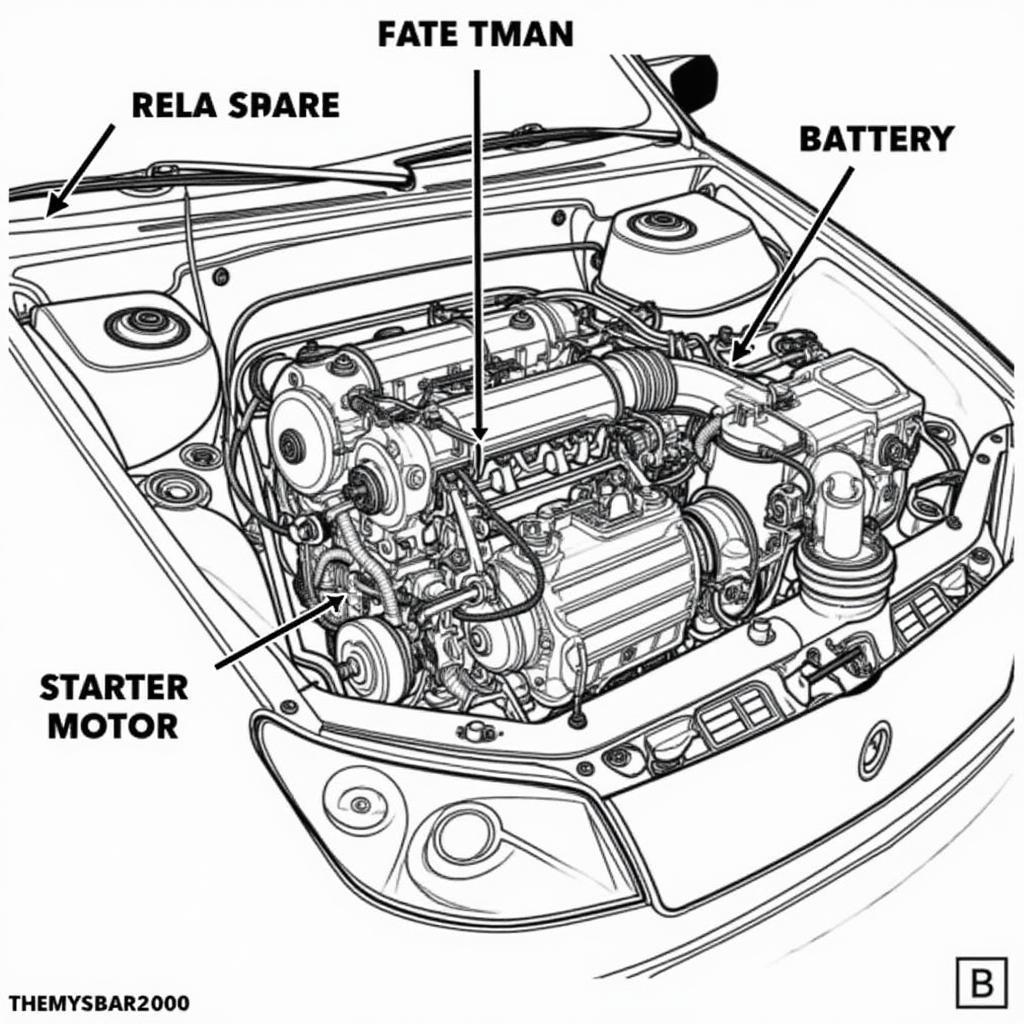My car just died and won’t start. This frustrating scenario is a common fear for every driver. Whether you’re late for work, stranded on a deserted road, or simply inconvenienced, a dead car can throw a wrench in your plans. Thankfully, with a little know-how and some remote diagnostics, you can often pinpoint the problem and get back on the road. This comprehensive guide will provide you with a step-by-step approach to diagnose and potentially fix the issue.
Common Reasons Why Your Car Won’t Start
Several culprits can cause your car to suddenly die and refuse to restart. Understanding these potential issues is the first step in resolving the problem. These include a dead battery, faulty alternator, starter motor problems, ignition system malfunctions, and fuel system issues. Less common, but still possible, are problems with the car’s computer system, security system, or even something as simple as a blown fuse.
Is it the Battery?
A dead battery is the most frequent reason for a car not starting. Try turning on your headlights. If they are dim or don’t turn on at all, a dead battery is the likely culprit. Jump-starting the car is a good first step. If the car starts, the battery likely needs replacing.
 Jump Starting a Dead Car Battery
Jump Starting a Dead Car Battery
Could it be the Alternator?
If your car starts after a jump but dies again shortly after, the alternator might be the issue. The alternator recharges the battery while the engine is running. A faulty alternator won’t charge the battery, leading to a repeat performance of the dead car scenario.
Starter Motor Troubles?
When you turn the key and hear a clicking sound, but the engine doesn’t crank, the starter motor might be the problem. The starter engages the engine flywheel to start the combustion process. A faulty starter can prevent the engine from turning over.
 Location of the Car Starter Motor
Location of the Car Starter Motor
Ignition System Issues
The ignition system provides the spark that ignites the fuel-air mixture in the engine cylinders. Problems with the spark plugs, ignition coils, or other ignition components can prevent the engine from starting.
Fuel System Problems
If the engine cranks but doesn’t start, the fuel system might be at fault. This could be due to a clogged fuel filter, a malfunctioning fuel pump, or a faulty fuel injector. These components ensure the proper delivery of fuel to the engine.
Diagnosing the Problem Remotely
Modern vehicles often store diagnostic trouble codes (DTCs) that provide valuable insights into the cause of the issue. Using specialized software and remote access, trained technicians can retrieve these codes and accurately diagnose the problem, sometimes even fixing it remotely through software updates and adjustments.
Steps to Take When Your Car Dies and Won’t Start
- Stay Calm: Panicking won’t help. Take a deep breath and assess the situation.
- Check the Obvious: Ensure the gear shifter is in park (or neutral for manual transmissions), the parking brake is engaged, and you have sufficient fuel.
- Try Jump-Starting: If the battery is suspected, attempt to jump-start the car using jumper cables and another vehicle or a portable jump starter.
- Listen Carefully: Pay attention to any sounds when you turn the key. Clicking sounds might indicate a starter problem, while a whining sound could point to the fuel pump.
- Check the Dashboard: Look for any warning lights that might offer clues about the problem.
- Seek Professional Help: If the problem persists, it’s time to contact a qualified automotive technician. They can use advanced diagnostic tools, including remote diagnostics, to pinpoint the issue and recommend the necessary repairs.
 Mechanic Diagnosing Car Problems Remotely
Mechanic Diagnosing Car Problems Remotely
Conclusion
When your car just died and won’t start, it can be a stressful experience. However, by systematically troubleshooting the problem and utilizing the power of remote diagnostics and software solutions, you can quickly get to the root of the issue and get back on the road. Don’t hesitate to seek professional assistance when needed, as they possess the expertise and tools to handle even the most complex automotive problems.
FAQ
- Can a dead battery be recharged? Yes, a dead battery can often be recharged using a battery charger. However, if the battery is old or damaged, it might need to be replaced.
- How long does a car battery typically last? Car batteries typically last between three and five years, although various factors can influence their lifespan.
- What is remote diagnostics? Remote diagnostics involves using specialized software and internet connectivity to access a vehicle’s computer system and retrieve diagnostic trouble codes, allowing technicians to diagnose problems remotely.
- Can remote diagnostics fix my car? In some cases, remote diagnostics can be used to fix certain car problems through software updates and adjustments. However, physical repairs might still be necessary for hardware issues.
- How can I prevent my car from dying unexpectedly? Regular maintenance, including battery checks, alternator inspections, and fuel system cleaning, can help prevent your car from dying unexpectedly.
- What should I do if my car dies while driving? If your car dies while driving, safely pull over to the side of the road, turn on your hazard lights, and call for roadside assistance.
- Is it safe to jump-start a car? Jump-starting a car is generally safe if done correctly. However, it’s essential to follow the proper procedures to avoid potential hazards.

